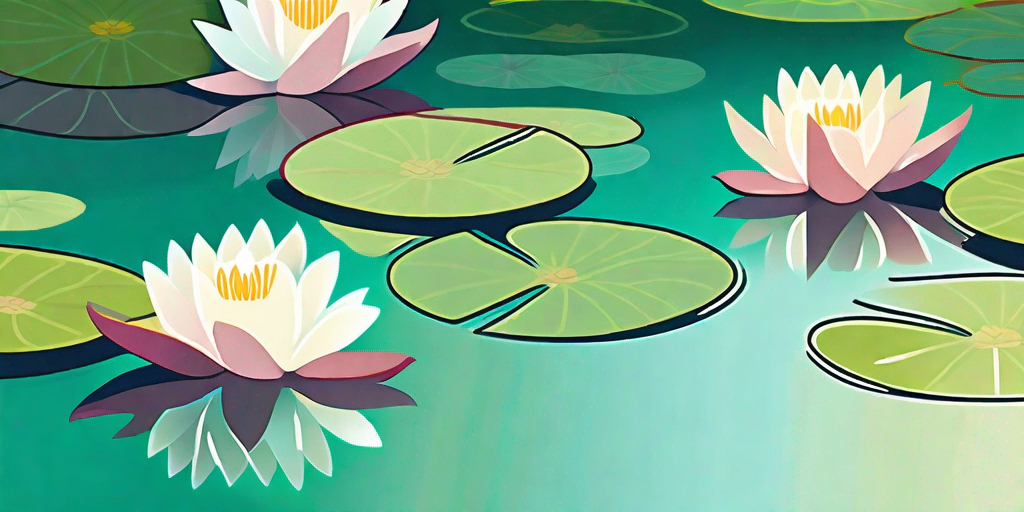
Welcome, dear reader, to the enchanting world of water lilies. These floating beauties are not just a feast for the eyes, but also a fascinating subject of study. So, buckle up and get ready to dive (not literally, of course) into the world of water lilies.
A Brief Introduction to Water Lilies
Before we get our feet wet, let's start with the basics. Water lilies, scientifically known as Nymphaeaceae, are aquatic plants that are native to temperate and tropical climates around the world. They are known for their large, round leaves and beautiful, fragrant flowers that float on the water's surface.
Water lilies are not just pretty faces, though. They play a crucial role in their ecosystem by providing shade and shelter for fish and other aquatic creatures. Plus, they help to oxygenate the water, which is a fancy way of saying they help fish breathe. Pretty cool, right?
The Different Types of Water Lilies
Like ice cream flavors or episodes of your favorite TV show, water lilies come in a variety of types. The two main categories are hardy water lilies and tropical water lilies.
Hardy water lilies, as the name suggests, are tough cookies. They can survive in colder climates and bloom from late spring to early fall. Tropical water lilies, on the other hand, prefer warmer climates and bloom from late spring to early fall.
How to Grow Water Lilies
Now that we've covered the basics, let's move on to the fun part: growing your own water lilies. Don't worry, it's not as hard as it sounds. In fact, with the right tools and a little bit of patience, you can turn your backyard pond into a water lily wonderland.
First, you'll need to choose the right type of water lily for your climate. Hardy water lilies are a good choice for colder climates, while tropical water lilies are better suited to warmer climates.
Planting Your Water Lilies
Once you've chosen your water lilies, it's time to get planting. You'll need a container, some heavy garden soil, and a sunny spot in your pond.
Start by filling the container with soil and placing the water lily tuber at a 45-degree angle. Cover the tuber with more soil, leaving the growing tip exposed. Then, slowly lower the container into the pond, making sure it's in a sunny spot.
Caring for Your Water Lilies
Water lilies may be beautiful, but they're also a bit high maintenance. They need plenty of sunlight, so make sure your pond gets at least six hours of direct sunlight each day.
They also need to be fertilized regularly during the growing season. A slow-release aquatic plant fertilizer is a good choice. Just remember to follow the package instructions to avoid over-fertilizing.
Dealing with Pests and Diseases
Like any plant, water lilies can be affected by pests and diseases. Aphids, water lily beetles, and leaf spot are some of the most common problems.
The good news is that most of these issues can be managed with regular monitoring and early intervention. So, keep an eye on your water lilies and don't hesitate to seek professional help if you notice any signs of trouble.
Frequently Asked Questions
Can I grow water lilies in a container?
Yes, you can! Water lilies can be grown in containers as long as they have enough water and sunlight. Just make sure to choose a container that's large enough for the water lily to grow.
How often do water lilies bloom?
Most water lilies bloom from late spring to early fall. However, the exact timing can vary depending on the type of water lily and the climate.
Do water lilies attract wildlife?
Yes, they do! Water lilies are a popular spot for frogs, dragonflies, and other aquatic creatures. They also attract birds and butterflies with their beautiful, fragrant flowers.
Conclusion
And there you have it, folks! A comprehensive guide to the enchanting world of water lilies. Whether you're a seasoned gardener or a curious newbie, we hope this article has inspired you to give water lilies a try. After all, who wouldn't want a piece of floating beauty in their backyard?
So, what are you waiting for? Grab your gardening gloves, roll up your sleeves, and get ready to dive into the world of water lilies. Happy gardening!















